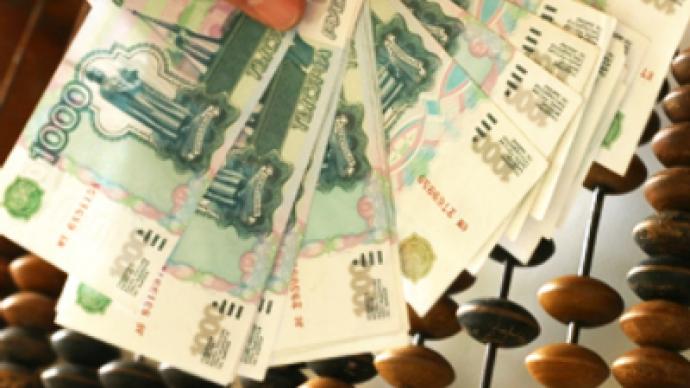Russian banks brace for torrid year ahead

Rouble devaluation, along with inflation, are the biggest challenges for Russia’s banks in 2009 according to expert. They are expecting massive consolidation in the sector and say banks must reduce costs.
The first wave of the crisis crashed on Russia’s banking sector leaving many heavily injured. The government bought some banks, and gave substantial financial support to others. In November, the Central Bank provided $42 Billion in loans.
But Anatoly Aksakov, from the State Duma Committee on Financial Markets, says Central Bank and government support has gone mainly to higher rated banks – which by definition are those partly state owned – and that the beneficiaries have been reluctant to lend it on to smaller, more risky, regional banks.
“Actions taken by the financial authorities were inappropriate in terms of competition. The government created more favorable conditions for federal banks. Regional banks were simply cut off from sources of refinancing provided by the state and the Central Bank.”
Klaus Rohland, Director of World Bank Russia, considers restoring trust between financial institutions the sector’s biggest challenge in 2009.
“The biggest challenge is to restart lending. The greatest issue that we see is the freezing of interbank credits. That’s crucial for any economy. Stimulation is needed.”
Experts say banks were living in an artificial – and very favourable – environment of ultra cheap finance. They say negative real interest rates were the main driver of growth in the Russian banking sector.
Now, for banks, that paradise is lost and they will have to review their entire mode of operation, according to Evgeny Gavrilenkov, Chief Economist at Troika Dialog.
“This year, for the first time, interest rates approached 9-11 percent. Banks will have to work in a situation of positive real interest rates. Plus there’s inflation – interest rate are not that high when inflation is 15 percent.”
In addition, the gradual Rouble devaluation is adding to pressure on Russia’s banks. Nobody knows to what level the Central Bank will let the Rouble fall. So banks are uncertain at what rates to lend and prefer to wait, rather than take risks.












